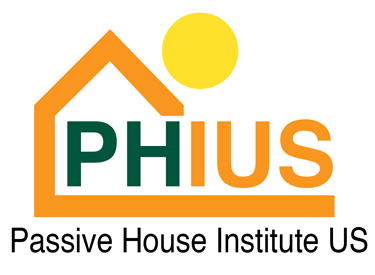PHIUS+ Certification for Building Projects is the only voluntary certification program on the US Market at an affordable cost that requires both: a thorough third party review of the design and energy/hygrothermal modeling of a project as well as a third party verification of the actual implementation on site through expert trained PHIUS+ RESNET Raters. A successful project earns the PHIUS+ Certified passive house or building plaque/certificate as well as the DOE Challenge Home and Energy Star labels.

GBCI / AIA – Recorded webinar instructions below
Learning Objectives:
1) Understand why Quality Assurance is essential to verified performance
2) Learn about the pre-certification process and what is required for the design review
3) Learn about the onsite verification performed by a Certified PHIUS+ Rater
4) Learn about the collaboration and endorsement by the DOE challenge Home program
Review the Webinar here
Presenter Katrin Klingenberg
Co-founder and Executive Director of the Passive House Institute US (PHIUS)
Katrin Klingenberg is Co-Founder and Executive Director of the Passive House Institute US (PHIUS). PHIUS promotes the wide adoption of passive building principles in North America through specialized consultant training and certification, project and product certification, and educational efforts for building professionals and the general public.

Ms Klingenberg designed and built the very first home built in the United States using the European standard and design specifications in 2002-2003. She has designed and consulted on numerous passive projects since across North America’s varied climate zones and has made proposals for the possible refinement of current passive house standards to North American climate zones. In addition to her executive role she is the lead instructor for PHIUS Certified Passive House Consultant training. In that role she directs curriculum. She also directs the technical and research programs of PHIUS. She holds a Masters Degree in architecture from Ball State University and is a licensed architect in Germany.
In order to be approved for GBCI/AIA you must follow the below steps
1. View the Audio/Visual Recording Here
2. Complete Survey + 10 Question Quiz and get a passing score of 80%
3. In order for CEUs to be processed we will need a small donation based on what value you found on the course. As a 501(c)3 charitable organization (view our details), we deliver green building education courses throughout the Midwest at minimal cost and at no profit. Please support us to help keep these going. Your donation to the Green Home Institute may be tax-deductible. Please check with your accountant or tax attorney for details.

